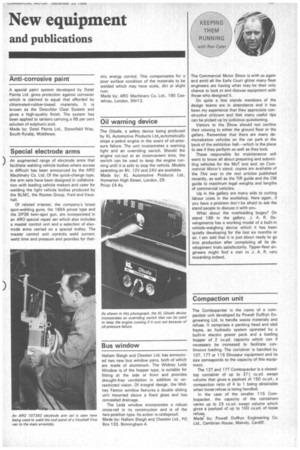KEEPING THEM RUNNING
Page 113

If you've noticed an error in this article please click here to report it so we can fix it.
with Ron Cater The Commercial Motor Show is with us again and amid all the Earls Court glitter many fleet engineers are having what may be their only chance to look at and discuss equipment with those who designed it.
On quite a few stands members of the design teams are in attendance and it has been my experience that they appreciate constructive criticism and that many useful tips can be picked up by judicious questioning.
Visitors to the Show should not confine their viewing to either the ground floor or the gallery. Remember that there are many demonstration vehicles on the car park at the back of the exhibition hall—which is the place to see if they perform as well as they look.
Those responsible for maintenance will want to know all about preparing and submitting vehicles for the MoT test and, on Commercial Motor's stand, copies are available of the This way to the test articles published recently, as well as the TIR guide and the CM guide to maximum legal weights and lengths of commercial vehicles.
Up in the gallery are many aids to cutting labour costs in the workshop. Here again, if you have a problem don't be afraid to ask the stand people to discuss it with you.
What about the overloading bogey? On stand 189 in the gallery, J. A. R. Developments has a working model of a built-in vehicle-weighing device which it has been quietly developing for the last six months or so. I am told that it is just about ready to go into production after completing all its development trials satisfactorily. Tipper-fleet engineers might find a visit to J. A. R. very rewarding indeed.


















































































































































































































































































































































































